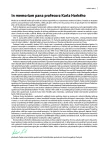Clinically relevant possibilities and limits of differential diagnosis of megaloblastic anemia and myelodysplastic syndrome – refractory anemia type in bone marrow biopsies
Authors:
Petra Vašeková 1; Peter Szépe 1,2; Ján Marcinek 1,2; Tomáš Balhárek 1,2; Lukáš Plank 1,2
Authors‘ workplace:
Konzultačné centrum bioptickej diagnostiky ochorení krvotvorby s celoslovenskou pôsobnosťou
Ústav patologickej anatómie Jesseniovej LF UK a UN Martin, Slovenská republika
1; Konzultačné centrum bioptickej diagnostiky ochorení krvotvorby s celoslovenskou pôsobnosťou
Martinské bioptické centrum, s. r. o., Martin, Slovenská republika
2
Published in:
Vnitř Lék 2016; 62(9): 692-697
Category:
Original Contributions
Overview
Introduction:
Megaloblastic anemia (MA) represents a subtype of macrocytic anemia caused by impaired DNA synthesis, mostly due to folate and vitamin B12 deficiency. Its mildest forms lead to macrocytosis without concomitant anemia, but more severe forms to thrombocytopenia and/or leucopenia as well. In majority of the cases, the diagnosis of MA dose not represent a serious clinical problem, however, other causes of macrocytosis including myelodysplastic syndrome (MDS) must be excluded.
Material and methods:
In the period 2004–2015 we identified in our registry 126 consecutive bone marrow (BM) biopsies of patients with cytopenia/s in peripheral blood and suspicion either on MA or MDS of refractory anemia (RA) type. We performed a retrospective analysis of BM biopsies focused on evaluation of parameters useful for the differential diagnosis, as represented by (a) cellularity and proportions of BM precursors, (b) and their topography, (c) presence of maturation defects and dysplastic changes, (d) grade and extent of myelofibrosis, (e) iron deposits and (f) presence of “inflammatory” response in BM. Histological analyses were supported by immunohistochemical examinations.
Results:
The series consisted of biopsies of 126 patients (61 men and 65 women) with average age 63 (14–88 years) – almost all patients (121/126) presented with anemia. Based on the findings we distinguished three diagnostic groups – MA (31 patients), MDS-RA (39) and bioptically unclasifiable case (“DIF DG” – 56 patients). Abnormalities of the BM cellularity were observed in 81 % and of topography in 73 % of all cases respectively. Megalobastic differentiation of erythropoesis was detected in 79 % and diagnostic dysplastic changes in 25 % of all biopsy cases. In 29 % of all biopsies ring sideroblasts were present, megakaryocytic nuclear lobulisation defects density changes were found in 61 % of all patients. In 14 % of all biopsies the BM myelofibrosis was absent, in contrast 5 % of the biopsies showed severe diffuse fibrosis. “Inflammatory” response was developed in 44 % of all biopsies. Iron deposits were absent in 26 %, decreased in 35 % and increased in 33 % of all the cases.
Conclusions:
From the point of view of histopathologist it seems to be difficult to distinguish BM hematopoietic changes in patients with MA and MDS-RA respectivelly, as histological examinations allowed determination of a definitive and correct diagnosis in about 55% of the cases. The crucial problem represents a decision whether the observed changes really result from the development of a clonal disease.
Key words:
megaloblastic anemia – megaloblastic differentiation – refractory anemia
Sources
1. Gowda M, Shetty SA, Shetty VS. Megaloblastic anaemia. e-Journal of Dentistry 2014; 4(2): 608–620. Dostupné z WWW: <http://www.ejournalofdentistry.com/articles/e-JOD7BD5F6F930–02FB-1209D82056.pdf>.
2. Lequit RJ, van den Tweel JG. The pathology of bone marrow failure. Histopathology 2010; 57(5): 655–670. Dostupné z DOI: <http://dx.doi.org/10.1111/j.1365–2559.2010.03612.x>.
3. Bizzaro N, Antico A. Diagnosis and classification of pernicious anemia. Autoimmunity reviews 2014; 13(4–5): 565–568. Dostupné z DOI: <http://dx.doi.org/10.1016/j.autrev.2014.01.042>.
4. Roddie C, Davis B. Iron, B12 and folate. J Medicine 2009; 37(3):125–128. Dostupné z DOI: <http://dx.doi.org/10.1016/j.mpmed.2008.12.009>
5. Parker-Williams E. Investigation and management of anaemia. Medicine 2004; 32(5): 14–20. Dostupné z DOI: <http://dx.doi.org/10.1383/medc.32.5.14.33954>.
6. Čermák J. Myelodysplastický sydrom. Pokroky v diagnostice a léčbe během 30 let trvání registru nemocných s myelodysplastickým syndromem v ÚHKT. Vnitř Lék 2012; 58(Suppl 2): 2S8–2S15.
7. Foucar K, Viswanatha DS, Wilson CS. Non-neoplastistic disorders of bone marrow. First series. Fascicle 6. ARP Press: Washington DC 2008: 84–89. ISBN 978–1-933477–04–6.
8. Čermák J. Trombocytopenie u myelodysplastického syndromu. Vnitř Lék 2010; 56(Suppl 1): S39-S42.
9. Garcia-Manero G. CME Information: MDS: 2014 Update on diagnosis, risk-stratification and management. Am J Hematol 2014; 89(1): 97–108. Dostupné z DOI: <http://dx.doi.org/10.1002/ajh.23642>.
10. Swerdlow SH, Campo E, Harris NL et al. World Health Organization Classification of Tumours of Hematopoetic and Lymphoid Tissues. 4th ed. IARC Press: Lyon 2008: 86–103. ISBN 9789283224310.
11. Arber DA, Orazi A, Hasserijan R et al. The 2016 revision to the World Health Organisation classification of myeloid neoplasms and acute leukemia. Blood 2016; 127(20): 2391–2405. Dostupné z DOI: <http://dx.doi.org/10.1182/blood-2016–03–643544>.
Labels
Diabetology Endocrinology Internal medicineArticle was published in
Internal Medicine

2016 Issue 9
Most read in this issue
- Arrhythmogenic left ventricular cardiomyopathy
-
Schnitzler’s Syndrome
Differential diagnostics, an overview of therapeutic options and description of 5 cases treated with anakinra - Oral anticoagulants for primary and secondary prevention of venous thromboembolism
- Clinically relevant possibilities and limits of differential diagnosis of megaloblastic anemia and myelodysplastic syndrome – refractory anemia type in bone marrow biopsies
